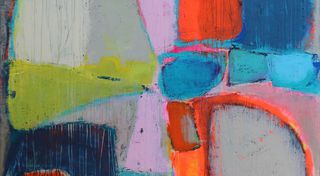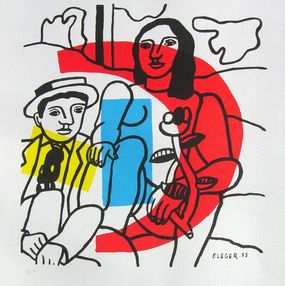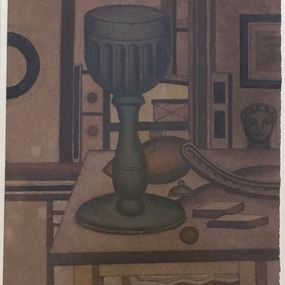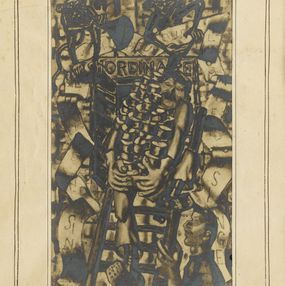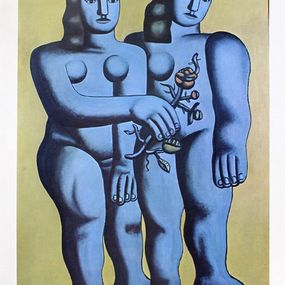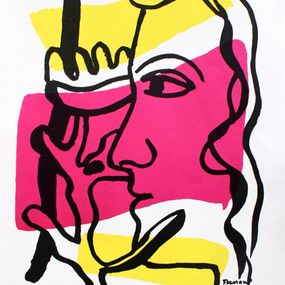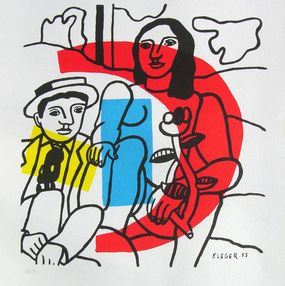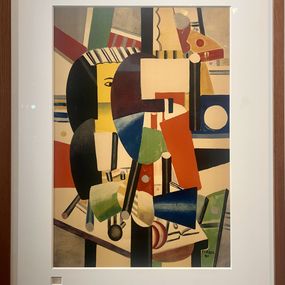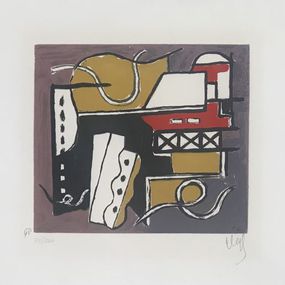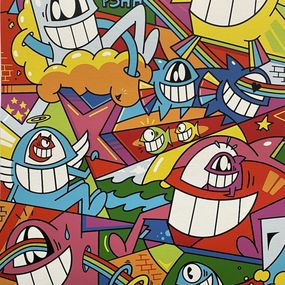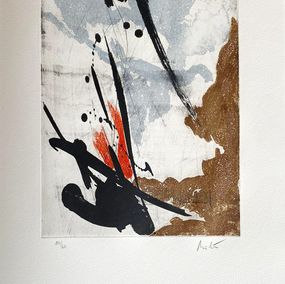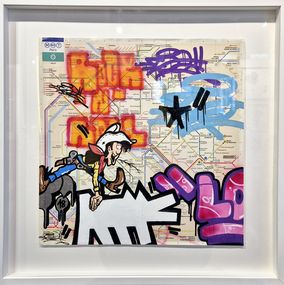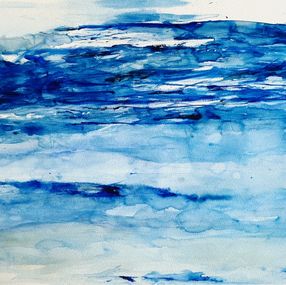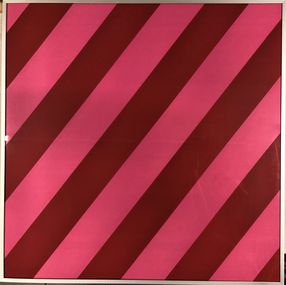
Le Viaduc,
1959
Fernand Léger
Print : lithography
50 x 65.5 x 0.3 cm 19.7 x 25.8 x 0.1 inch
Free returns within 14 days
Authenticity guaranteed
Learn moreSecure payment
About the artwork
Type
Numbered and limited to 180 copies
Signature
Plate signed
Authenticity
Sold with certificate of Authenticity from the gallery
Invoice from the gallery
Medium
Dimensions cm • inch
50 x 65.5 x 0.3 cm 19.7 x 25.8 x 0.1 inch Height x Width x Depth
Support
Framing
Not framed
Artwork sold in perfect condition
Artwork location: Switzerland
About the seller
TGP Auction • Switzerland
Artsper seller since 2020
Vetted Seller
Top Seller
This seller rewards your purchases of multiple artworks
Collector’s Guide
Discover more by the artist
Presentation
Fernand Léger was born on 4 February 1881 in Argentan (Orne) and died on 17 August 1955 in Gif-sur-Yvette (Essonne). He is a representative of the cubist current. His version of it is also called by critics "tubism", due to his preference for tubular forms. His style is close to Italian futurism, especially in his series of workers on scaffolds.
Fernand Léger studied in Paris, at the Ecole des Arts Décoratifs. His first works are influenced by Impressionism, but after discovering the work of Paul Cezanne, he shifted towards cubism.
In 1907, he moved to "La Ruche" (artist's studios in Paris), where he met numerous painters, including Paul Cézanne, Braque and Picasso. He was mobilized in 1914for service in the French Army, which marked a break in his work. At the front, he drew in the trenches; he was hospitalized and then sent home in 1917. He got married and moved to Vernon. Mechanical elements become more and more present in his works.
During the 20s he had a very productive period: he had numerous commissions and met many artists including Le Corbusier. He also worked for the cinema. His first big exhibition was held in Chicago in 1935.
At the breaking of World War II, he moved to New York. Many of his friends were also in exile in the US: André Breton, Masson, Tanguy, Ernst, Chagall, Mondrian. He returned to France in 1945, where he joined the Communist Party (with Picasso, among others) and defended ideas such as realism in art.
Fernand Léger was also the Director of painting schools, such as the Montrouge and Montmartre schools, where students such as Louise Bourgeois or Serge Gainsbourg were trained.
Find this artist and many more in our collection of works from the cubist movement.
More works from TGP Auction
This seller offers discount when you purchase multiple artworks!
Artsper delivers internationally. The list of countries is available in the first step of your cart.
If your country is not listed contact us at [email protected] and we will see what we can do.
Note that Customs fees may apply for works shipped internationally. This is indicated in the first step of the shopping cart.
You can choose a delivery address different from the billing address. Make sure that a trusted person is present to receive the work if you cannot be there.
Have you purchased a painting, sculpture or work on paper?
Find our expert advice for the conservation and promotion of your works in the articles below:
Artsper offers you access to more than 200,000 works of contemporary art from 2,000 partner galleries. Our team of experts carefully selects galleries to guarantee the quality and originality of the works.
You benefit from:
-
Works at gallery price
-
Return within 14 days, regardless of your location
-
Easy resale of the work purchased on Artsper
-
Personalized research tools (selection and tailor-made universe)
Our customer service is available for any assistance.
At Artsper, our mission is to allow you to collect works of art with complete peace of mind. Discover the protections we offer at every stage of your shopping experience.
Buy works from top galleries
We work in close collaboration with carefully selected art galleries. Each seller on Artsper is carefully examined and approved by our team, thus ensuring compliance with our code of ethics. You therefore have the assurance of purchasing authentic, high-quality works.
Total transparency: you know what you are buying
Before being posted online, all artwork on Artsper is reviewed and validated by our moderation team. You can browse with complete peace of mind, knowing that each piece meets our criteria of excellence.
Personalized support: our experts at your service
Our team of contemporary art experts is available by phone or email to answer all your questions. Whether you want advice on a work or a tailor-made selection to enrich your collection, we are here to support you.
Resell your works with ease
If you have purchased a work on Artsper and wish to resell it, we offer you a dedicated platform to relist it. To find out more, click here.
Make offers with Artsper: negotiate like in a gallery
You have the possibility to propose a price for certain works, just like in a gallery. This feature allows you to initiate discussions and potentially acquire your coins at advantageous prices.
Get help with your negotiations
Our team will negotiate for you and inform you as soon as the best offer is obtained. Do not hesitate to call on our expertise to ensure a transaction at the best price.
Order securely
Artsper satisfaction assurance
We want you to be completely satisfied with your purchase. If the work you receive is not to your liking, you have 14 days to return it free of charge, and you will be refunded in full, whatever the reason.
Secure payment with Artsper partners
All credit card payments are processed by Paybox, the world leader in payment solutions. Thanks to their strict security standards, you can transact with confidence.
Problem Support
In the rare event that an artwork arrives damaged or not as described, we are here to help. Whether for a return, refund, restoration or exchange, our team will support you throughout the process and will ensure that we find the solution best suited to your situation.
Conditions to benefit from Artsper protections:
-
Use one of the payment methods available on Artsper for your order.
-
Report any problems within one week of receiving the work.
-
Provide required photographic evidence (including original artwork and packaging).
Artsper guarantees cover the following cases:
-
The received work lacks a described characteristic (for example, a signature or frame).
-
The artwork has significant differences from its description (e.g. color variation).
-
The work is damaged upon receipt.
-
The work is lost or damaged by the carrier.
-
Delivery is significantly delayed.
With Artsper, you collect with complete peace of mind.
